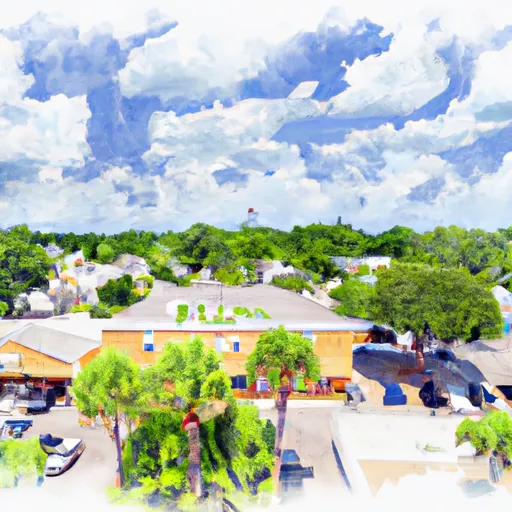-
 Snoflo Premium
Snoflo Premium
Get unlimited access to all our content
With no Ad interruptions! - Start Your Free Trial Login with existing account
Holt
Eden Index
Climate
7.0
•
Recreation
5.1
•
Community
•
Safeguard
4.6/10

Holt, Florida is a small unincorporated community located in Okaloosa County. Situated in the panhandle of Florida, Holt experiences a humid subtropical climate. Summers are typically hot and humid, with temperatures often exceeding 90°F (32°C), while winters are mild with temperatures rarely dropping below 40°F (4°C). The area receives abundant rainfall throughout the year, contributing to the lush vegetation and thriving hydrology constituents.
Holt benefits from its proximity to various water bodies, including the Yellow River and Blackwater River. These rivers provide opportunities for fishing, canoeing, kayaking, and boating enthusiasts. Anglers can enjoy catching various freshwater fish species, such as bass, catfish, and bream.
Outdoor recreation opportunities in Holt extend beyond the water. The area is surrounded by picturesque forests, making it ideal for hiking and camping. The Blackwater River State Forest, located nearby, offers numerous trails for hiking, biking, and horseback riding. It also provides opportunities for wildlife observation and hunting during designated seasons.
In summary, Holt, Florida enjoys a humid subtropical climate, abundant rainfall, and access to water bodies like the Yellow River and Blackwater River. With its beautiful forests and rivers, it offers a range of outdoor recreation activities such as fishing, boating, hiking, and camping.
What is the Eden Index?
The Snoflo Eden Index serves as a comprehensive rating system for regions, evaluating their desirability through a holistic assessment of climate health, outdoor recreation opportunities, and natural disaster risk, acknowledging the profound impact of these factors on livability and well-being.
Climate Health Indicator (CHI): 7.0
Holt receives approximately
1646mm of rain per year,
with humidity levels near 80%
and air temperatures averaging around
19°C.
Holt has a plant hardyness factor of
8, meaning
plants and agriculture in this region tend to thrive here all year round.
By considering the ideal temperature range, reliable water supplies, clean air, and stable seasonal rain or snowpacks, the Climate Health Indicator (CHI) underscores the significance of a healthy climate as the foundation for quality living.
A healthy climate is paramount for ensuring a high quality of life and livability in a region, fostering both physical well-being and environmental harmony. This can be characterized by ideal temperatures, reliable access to water supplies, clean air, and consistent seasonal rain or snowpacks.
Weather Forecast
Streamflow Conditions
Florida Panhandle Coastal
Area Rivers
Florida Panhandle Coastal
Snowpack Depths
Florida Panhandle Coastal
Reservoir Storage Capacity
Florida Panhandle Coastal
Groundwater Levels
Recreational Opportunity Index (ROI): 5.1
The Recreational Opportunity Index (ROI) recognizes the value of outdoor recreational options, such as parks, hiking trails, camping sites, and fishing spots, while acknowledging that climate plays a pivotal role in ensuring the comfort and consistency of these experiences.
Access to outdoor recreational opportunities, encompassing activities such as parks, hiking, camping, and fishing, is crucial for overall well-being, and the climate plays a pivotal role in enabling and enhancing these experiences, ensuring that individuals can engage in nature-based activities comfortably and consistently.
Camping Areas
| Campground | Campsites | Reservations | Toilets | Showers | Elevation |
|---|---|---|---|---|---|
| Hoover RV Park | None | 483 ft | |||
| Brierfield Ironworks Historical Park | None | 358 ft | |||
| Jones Bluff | None | 136 ft | |||
| Hurlburt Field Military | None | 13 ft | |||
| Prairie Creek | 40 | 135 ft | |||
| Oak Mountain State Park | 145 | 683 ft | |||
| Karick Lake Lower - Blackwater River State Forest | None | 159 ft | |||
| Karick Lake Upper - Blackwater River State Forest | None | 154 ft | |||
| Sherling Lake City Park | 41 | 440 ft | |||
| Blackwater River State Park | None | 28 ft |
Nearby Ski Areas
Catastrophe Safeguard Index (CSI):
The Catastrophe Safeguard Index (CSI) recognizes that natural disaster risk, encompassing floods, fires, hurricanes, and tornadoes, can drastically affect safety and the overall appeal of an area.
The level of natural disaster risk in a region significantly affects safety and the overall livability, with climate change amplifying these risks by potentially increasing the frequency and intensity of events like floods, fires, hurricanes, and tornadoes, thereby posing substantial challenges to community resilience and well-being.
Community Resilience Indicator (CRI):
The Community Resilience Indicator (CRI) recognizes that education, healthcare, and socioeconomics are crucial to the well-being of a region. The CRI acknowledges the profound impact of these elements on residents' overall quality of life. By evaluating educational resources, healthcare accessibility, and economic inclusivity, the index captures the essential aspects that contribute to a thriving community, fostering resident satisfaction, equity, and social cohesion.

